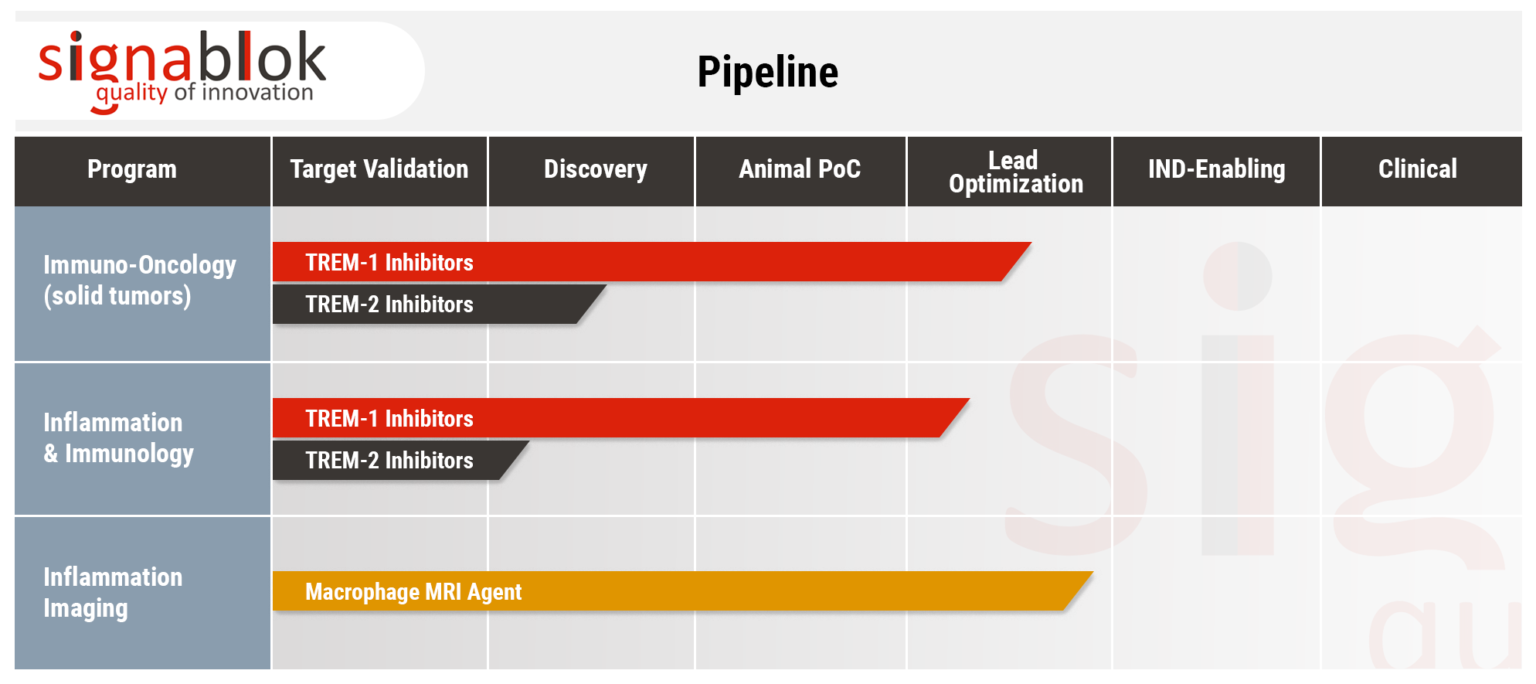Immune cell receptors the extracellular ligand-binding domains and intracellular signaling domains of which are located on separate subunits are often referred to as multichain immune recognition receptors (MIRRs). MIRRs play an important role in health and disease. Examples are triggering receptors expressed on myeloid cells (TREM-1 and TREM-2), T cell receptor, B cell receptor, and immune-type receptor glycoprotein VI.
Based on the unique and previously unreported phenomenon in the field of protein biophysics discovered by SignaBlok's founders in 2004, the SCHOOL model is the first and only model that solves the long-standing puzzle of transmembrane signal transduction by MIRRs at the level of protein-protein interactions – processes that can be influenced and controlled.
The SCHOOL platform builds on the discovery that the similarity of the MIRR-triggering mechanisms provides the similarity of the drug targets. The interactions between MIRR ligand-binding and signaling subunits in the cell membrane represent one of these targets. Based on the SCHOOL drug discovery platform, MIRR-specific short synthetic peptide sequences can be designed to disrupt these interactions and block MIRR signaling in a ligand-independent manner.
SCHOOL inhibitors can advantageously reach their site of action in the cell membrane from both the outside and inside the cell. This allows their use in either free peptide form or formulated in delivery systems for targeted intracellular delivery.

